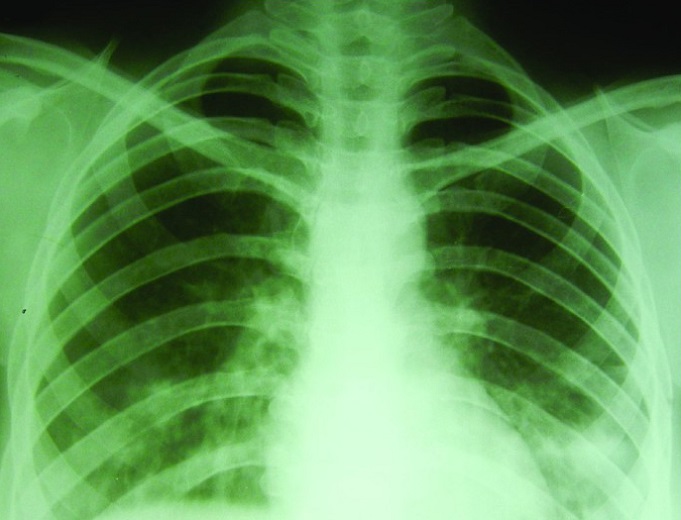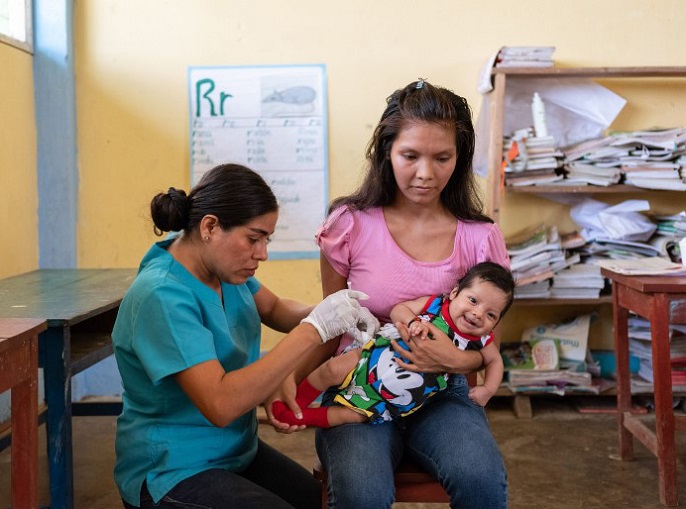Nikhil Prasad Fact checked by:Thailand Medical News Team Jul 10, 2024 9 months, 2 weeks, 2 days, 15 hours, 3 minutes ago
Medical News: Winter 2024 - A Surge in Respiratory Infections
Peru is currently grappling with a significant rise in respiratory infections as winter takes hold. The Peruvian Ministry of Health (Minsa) reported around 48,000 cases of acute respiratory infections (ARIs) in the last week of June alone. This surge is part of a worrying trend that has seen 12,000 cases of pneumonia in children under five years recorded nationwide during the same period. The rise in infections is being attributed to the colder temperatures that have gripped Lima and other regions of the country.
 Pneumonia cases are now rampant in Peru
Pneumonia cases are now rampant in Peru
Image Credit - TMN
The Danger to Children
Pneumonia, a severe complication of ARIs that affects the lungs, is particularly dangerous for young children. The disease causes the alveoli in the lungs to fill with pus and fluid, leading to pain during breathing and restricted oxygen absorption. Since January, pneumonia has claimed the lives of 96 children under five in Peru. Dr Pedro Cazorla Salinas, a pediatrician and professor at the Universidad San Ignacio de Loyola (USIL), emphasizes the vulnerability of infants due to their immature immune systems, which are further compromised by winter's low temperatures.
Preventive Measures and Vaccination
Minsa has stressed the importance of vaccination to prevent pneumonia in children. They recommend that younger children receive three doses of the pneumococcal vaccine.
https://www.gob.pe/institucion/minsa/noticias/982846-menores-de-5-anos-necesitan-tres-dosis-de-la-vacuna-contra-el-neumococo-para-estar-totalmente-protegidos
However, the National Single Repository of Health Information (Reunis) data reveals a concerning gap in immunization rates: only 40% of children under one year have been vaccinated against pneumococcus, and a mere 9.2% have received the influenza vaccine this year.
Dr Cazorla also highlights other preventive measures such as frequent hand washing, ensuring good ventilation in living spaces, avoiding crowded areas, and maintaining up-to-date vaccination schedules. These steps are crucial in combating the spread of respiratory diseases among the vulnerable pediatric population.
The Impact of Respiratory Infections
The increase in ARIs is not just limited to children. The CDC has recorded nearly one million cases of ARIs in children under five in the first half of the year. Low temperatures have exacerbated the situation, leading to higher incidences of respiratory diseases. Lima, Loreto, Arequipa, and Puno are the regions most affected, with Lima alone reporting 3,488 cases.
Recognizing Symptoms and Seeking Treatment
Dr Cazorla told local
Medical News and mainstream media parents are advised to be vigilant about symptoms such as nasal congestion, dry or mucous cough, fever, sore throat, general malaise, an
d difficulty breathing in young children. The severity and duration of these symptoms can vary depending on the type of respiratory infection. For mild infections like the common cold or rhinopharyngitis, rest, hydration, and prescribed medication are recommended. For more severe cases like bronchitis caused by the respiratory syncytial virus (RSV), supportive treatment including oxygen therapy and intravenous hydration may be necessary.
 Children Are Bearing The Brunt Of The Wave Of Respiratory Infections In Peru
Children Are Bearing The Brunt Of The Wave Of Respiratory Infections In Peru
Image Credit: Dr Ari Yares
The Role of Asthma and Other Complications
In addition to ARIs and pneumonia, there has been a notable rise in asthma episodes among children under five, with 6,080 cases reported. The CDC has suggested the use of masks as a protective measure to help curb the spread of respiratory conditions and protect vulnerable groups.
Addressing the Immunization Gap
The low vaccination rates are a significant concern for health authorities. Ensuring that children are immunized against pneumococcus and influenza is a vital step in reducing the incidence and severity of respiratory infections. Increasing public awareness and accessibility to vaccines are critical strategies that Minsa is focusing on to address this gap.
Public Health Response and Recommendations
Minsa's public health campaign aims to educate parents and caregivers about the importance of vaccination and preventive measures. Health officials are working to increase vaccine coverage and provide practical advice to prevent the spread of respiratory infections. The campaign emphasizes the need for community involvement in maintaining hygiene and ensuring that children receive the necessary vaccines.
 The Peruvian government has initiated a variety of vaccine programmes for children.
The Peruvian government has initiated a variety of vaccine programmes for children.
Image Credit: Unicef
Conclusion
The alarming rise in respiratory infections in Peru, particularly among young children, underscores the urgent need for preventive measures and increased vaccination coverage. The Peruvian Ministry of Health and the National Center for Epidemiology, Prevention and Disease Control are working tirelessly to address this public health challenge. Parents and caregivers are urged to follow recommended preventive measures and ensure that their children are vaccinated.
For more about the situation in Peru, keep on logging to Thailand
Medical News.
Read Also:
https://www.thailandmedical.news/news/dengue-crisis-escalates-in-karnataka-india-7006-cases-and-six-deaths-recorded
https://www.thailandmedical.news/news/breaking-5-year-old-girl-is-second-to-be-infected-with-h5n1-in-cambodia-in-less-than-3-days-more-cases-expected
https://www.thailandmedical.news/news/latest-rift-valley-fever-outbreak-in-uganda-kills-three-while-hundreds-at-risk


